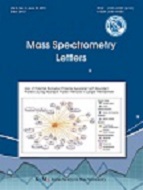
- P-ISSN 2233-4203
- E-ISSN 2093-8950

5α-Dihydrotestosterone (DHT) is the primary active metabolite of testosterone, catalyzed by 5α-reductase (5αR) in the skin, prostate, and liver. In this study, the 5αR activity in rat liver S9 fraction in the presence of a NADPH-generating system was evaluated and compared by gas chromatography-mass spectrometry (GC-MS)-based in vitro assays. Testosterone and a 5αR inhibitor, finasteride, were added to the S9 fractions and incubated at 37oC for 1 h. Both testosterone and DHT were quantitatively measured and compared with two different GC-MS-based steroid profiling techniques. DHT was not detected by conventional GC-MS analysis in the absence of finasteride when the concentration of testosterone in the S9 fraction was less than 0.2 μM, whereas the isotope-dilution GC-MS (GC-IDMS) system was able to evaluate the 5αR activity. Because the S9 fraction contains more reactive enzymes and is easier to collect from tissues compared with a microsomal solution, the combination of the S9 fraction and GC-IDMS technique may be a promising assay for evaluating the 5αR activity in large-scale clinical studies.
Nuck, B. A. (1987). . J. Invest. Dermatol, 89, 209211-.
Starka, L. (1993). . Endocr. Regul, 27, 43-.
Choi, M. H. (2001). . J. Invest. Dermatol, 116, 57-.
Glrmley, G. J. (1990). . J. Clin. Endocriol. Metabol, 70, 1136-.
Lee, S. H. (2007). . Anal. Chem, 79, 6102-.
Falk, R. T. (2008). . Cancer Epidemiol. Biomarkers Prev, 17, 3411-.
Taieb, J. (2003). . Clin. Chem, 49, 1381-.
Wang, C. (2004). . J. Clin. Endocrinol. Metab, 89, 2936-.
Payne, A. H. (2004). . Endocr. Rev, 25, 947-.
Choi, M. H. (2002). . Clin. Chim. Acta, 320, 95-.
Cawood, M. L. (2005). . Clin. Chem, 51, 1472-.
Tai, S. S. (2007). . Anal. Bioanal. Chem, 388, 1087-.
Ha, Y. W. (2009). . J. Chromatogr. B, 877, 4125-.
Su Hyeon Lee. (2010). Isotope-Dilution Mass Spectrometry for Quantification of Urinary Active Androgens Separated by Gas Chromatography. Mass Spectrometry Letters, 1(1), 29-32. http://dx.doi.org/10.5478/MSL.2010.1.1.029.
Rijk, J. C. (2008). . Anal. Bioanal. Chem, 392, 417-.
Moon, J.-Y. (2009). . J. Am. Soc. Mass Spectrom, 20, 1626-.
Okuda, K. (2011). . Drug Metab. Dispos, 39, 1696-.
Brian, C. (2006). . Nat. Protoc, 1, 1872-.
Chalbot, S. (2005). . Drug Metab. Dispos, 33, 563-.